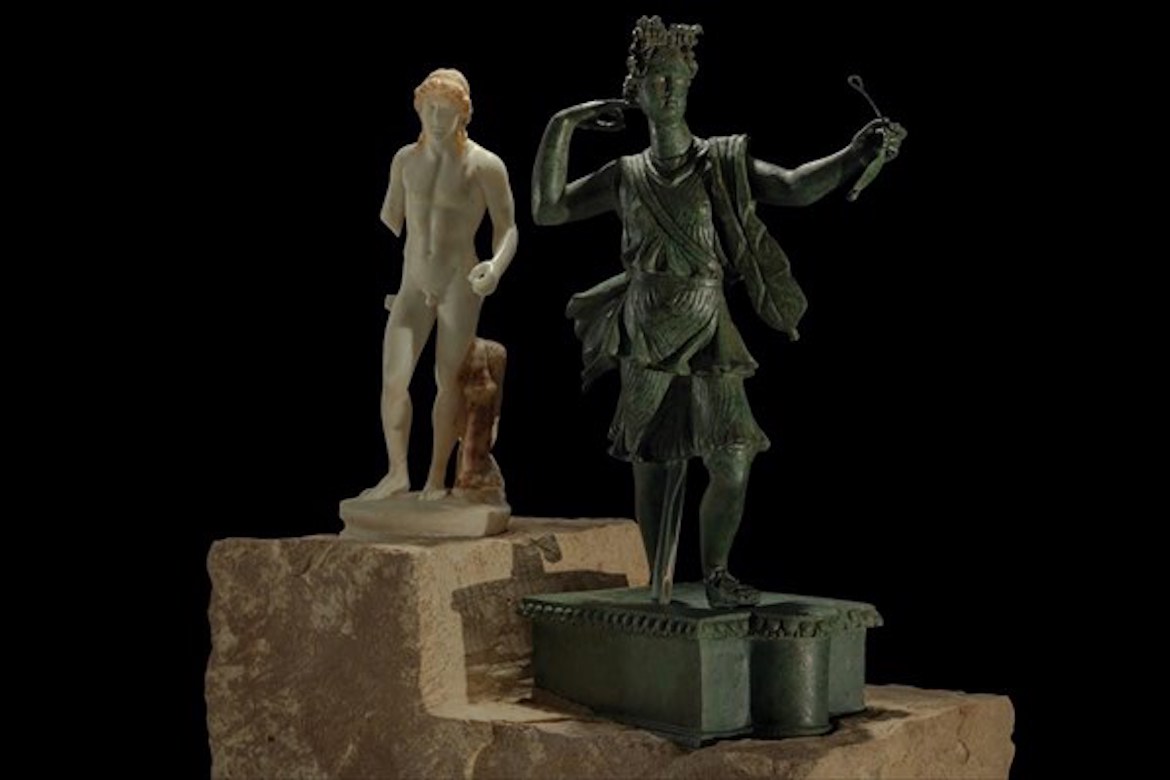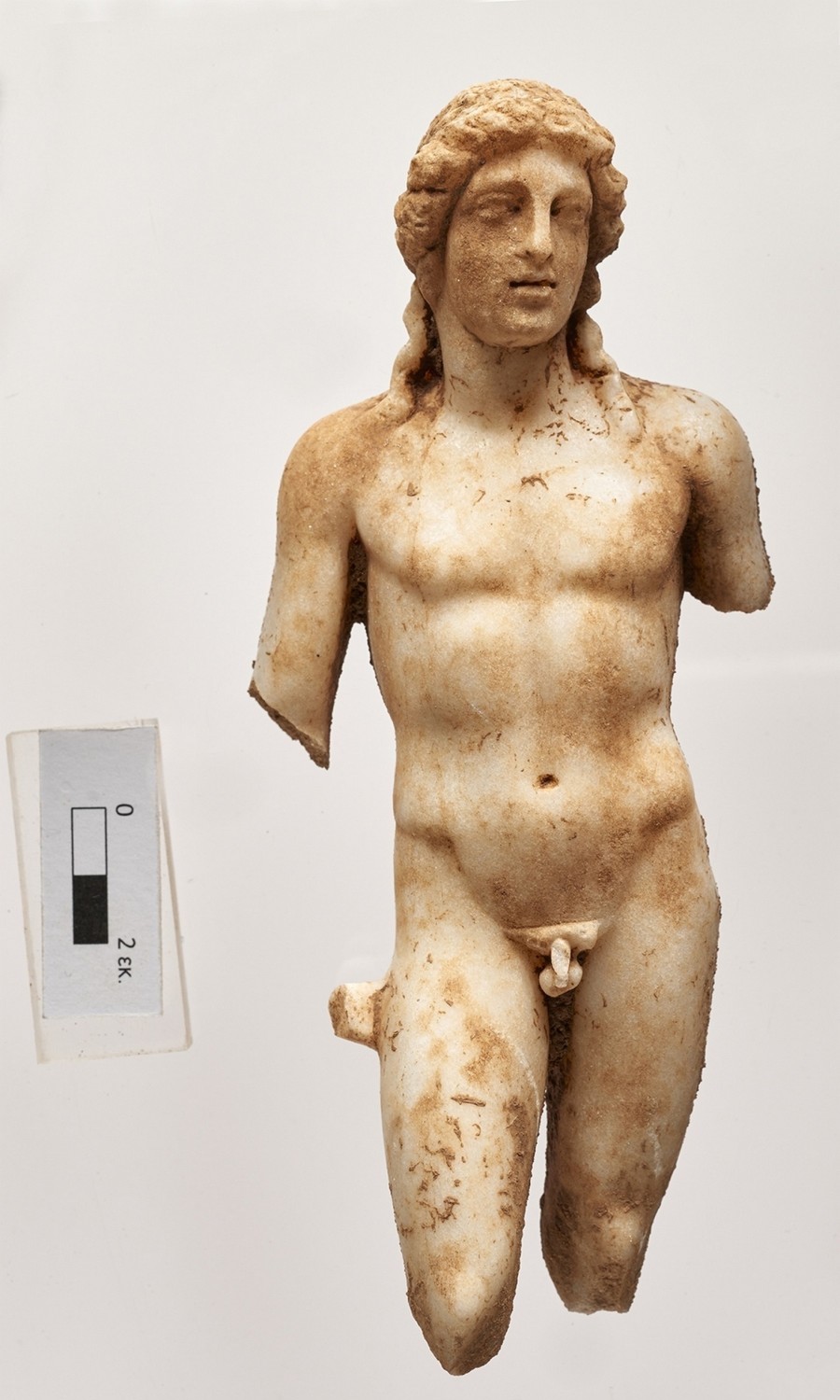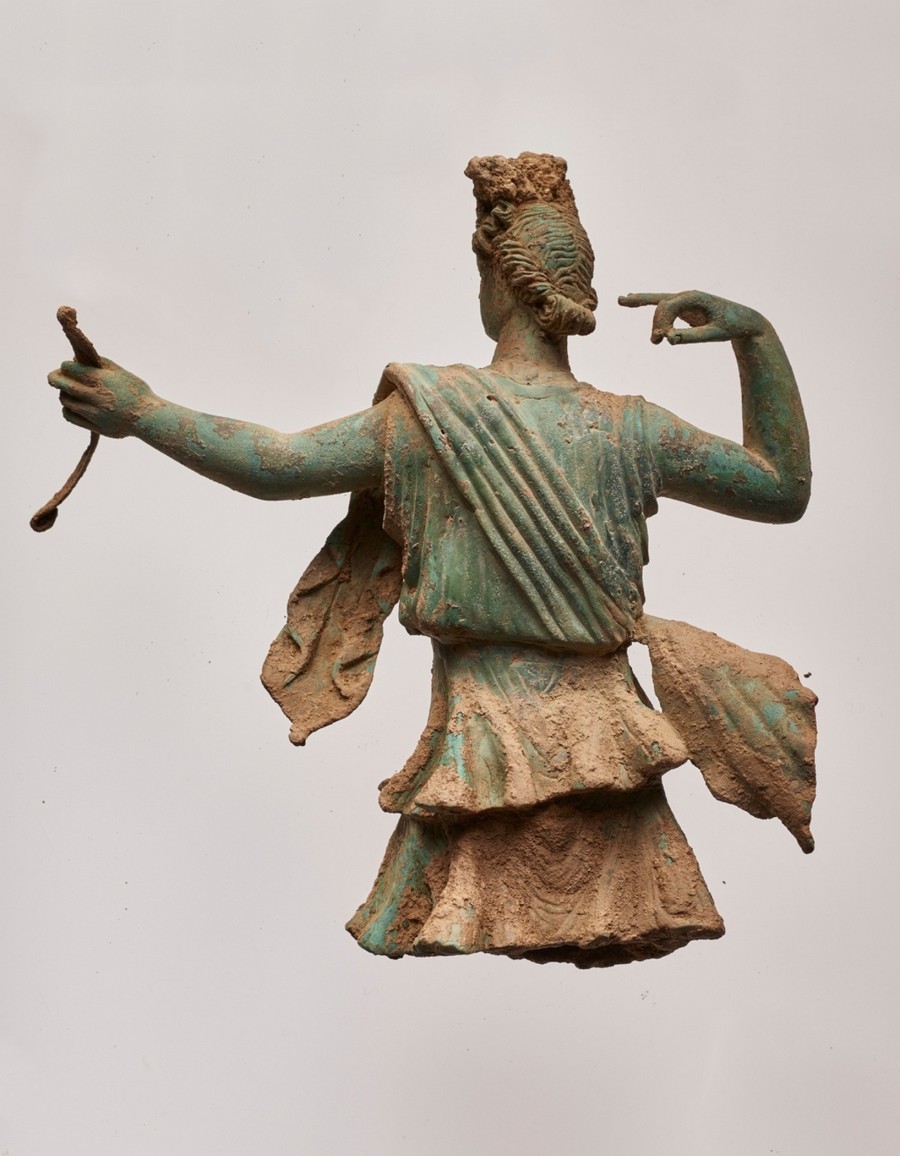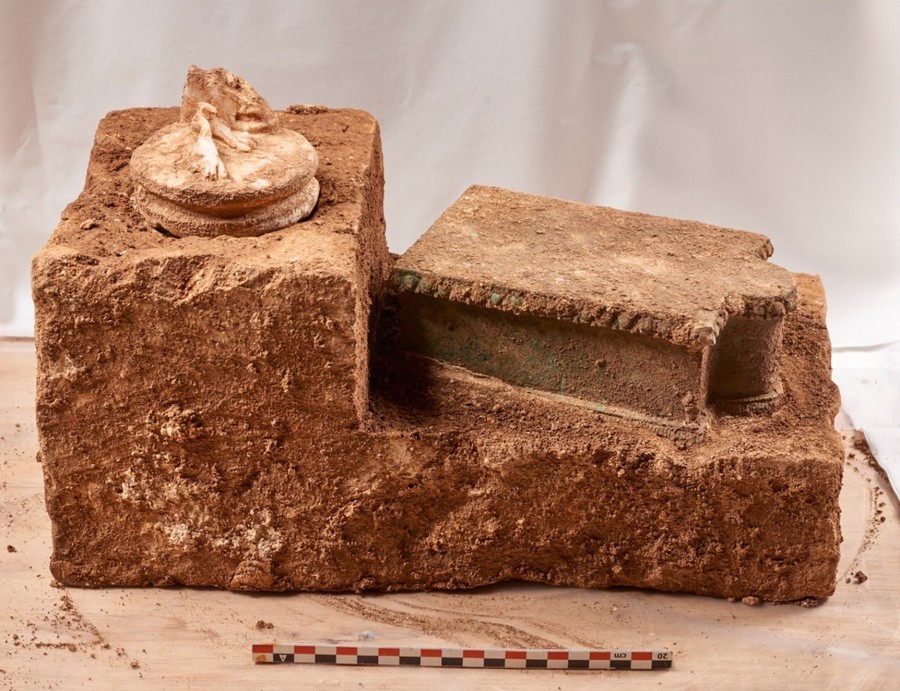A team of archaeologists on the island of Crete have discovered rare statuettes of the twin ancient Greek gods Artemis and Apollo dating back nearly 2,000 years.
The discovery came during an excavation taking place at a Roman home in the archaeological site of Aptera — located approximately 12 miles outside of Chania. Archaelogist Vanna Niniou-Kindeli is leading the operation — funded by the Region of Crete.
The Chania Ephorate of Antiquities presented the statues of the twin gods on July 24 at the Archaelogical Museum of Crete.
In an official announcement, the Ephorate described the figures as follows:
“Artemis, the protector goddess of Aptera, is made of copper, while her twin brother Apollo, is made of marble. The goddess stands on an elaborate box-shaped copper base and is depicted in intense stride, wearing a short, slender chiton, and she is ready to shoot. Although Apollo is depicted in a more modest way, his attitude conveys internal tension.”
Archaelogists say the small statues yield significant artistic value and date back to approximately the 2nd century AD. They also speculate that the statues were imported from artistic centers outside Crete to adorn the luxurious Roman home in Aptera.
The sculptures, which were discovered baseless, were originally mounted with lead on a small stepped stone pedestal.
In Greek mythology, Artemis and Apollo were the children of Zeus and Leto and were both archers.
Artemis was the goddess of hunting, as well as nature, virginity and the moon. The ancient Greeks considered her the protector of young girls and worshipped her as one of the main goddesses of childbirth and midwifery.
Apollo was the god of music, dance, truth, healing and light. Every day, Apollo was responsible for providing the science of medicine to mankind and moving the sun across the sky.



















